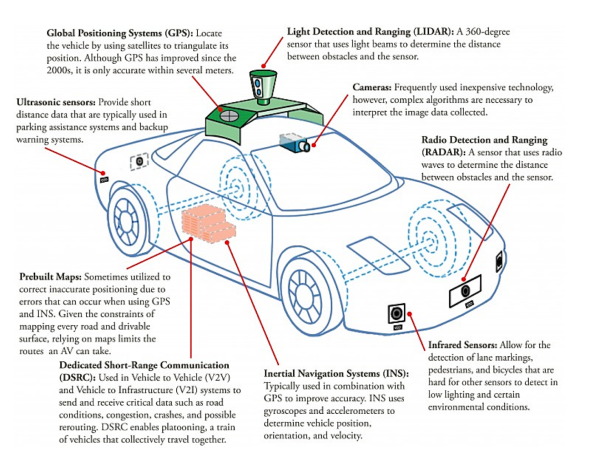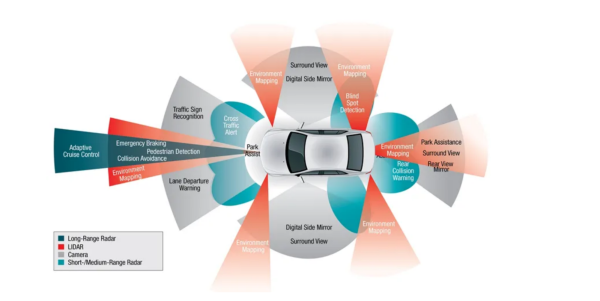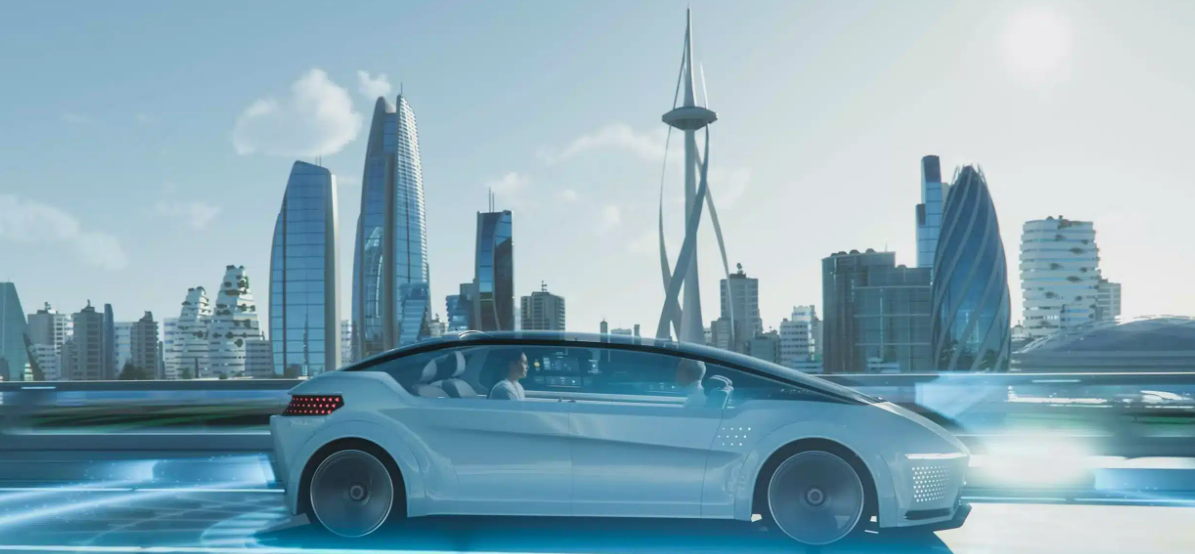If you’ve been to San Francisco in the past couple of years, you might have seen some cars with the company name “Waymo” driving down the most hectic streets of downtown. You might first notice the black cone-shaped sensor on the top of the car, the dozens of cameras on the body, or maybe the most defining feature—the empty driver seat.
Self-driving cars—from Tesla’s autopilot feature to the road accidents we see involving autonomous cars—have been a hot topic for decades. But how close are we to making them a viable method of daily transportation?
Although it’s unlikely we’ll see self-driving cars make up the majority of traffic anytime soon, businesses that offer driverless taxi rides to the public, such as Waymo and Cruise, are a promising sign of the future.

An autonomous vehicle (or AV for short) uses a combination of different technologies and physical sensors to map out its surroundings and respond accordingly. Common sensors that are used include LIDAR, RADAR, and cameras. LIDAR (Light Detection and Ranging) is a 360° sensor mounted on top of the vehicle that emits millions of laser pulses per second while rotating at high speeds.
It calculates the time it takes for each pulse to reflect back to the sensor, allowing it to calculate the distance traveled and provide a detailed 3D map. LIDAR is highly accurate yet quite expensive. RADAR (Radio Detection and Ranging) sensors are positioned on each corner and front of the car and use radio waves to determine the distance between objects and the sensor.
RADAR is better for long-range detection and unfavorable weather conditions, and is less costly than LIDAR. Cameras are also frequently used because they are inexpensive and imitate human vision. Tesla relies only on cameras because Elon Musk believes that “Humans drive with eyes and biological neural nets, so [it] makes sense that cameras and silicon neural nets are [the] only way to achieve a generalized solution to self-driving.”
However, they require advanced AI analysis and algorithms to recognize and map out their surroundings. Most companies producing self-driving cars often implement different combinations of these sensors based on their unique needs.
Autonomous systems use simulations that put them through different driving scenarios; these simulations, along with the statistics from recorded data gathered during car rides, are then used to train the machine learning algorithm and improve it.

In more recent years, the advancement of AV technology has already led to major increases in demand, and it will only continue to grow. AVs are anticipated to impact various fields, including healthcare, insurance, travel, and logistics. With autonomous technology taking over the driver’s seat, auto insurance costs are expected to decrease drastically along with a reduction in traffic jams. Additionally, AVs may reduce the morbidity and fatalities from vehicle accidents (Othman et al. 2022). Elon Musk added that “Self-driving cars are the natural extension of active safety and obviously something we should do.”
It is clear that the addition of AVs to society will not only create cleaner environments and less congested roads but will also enhance quality of life. However, these successes are resting on the strategies and policies implemented around its adoption. If there is a lack of support in integrating AVs into society and nothing is adapted for AVs to safely drive on roads, advancements in AV technology will be hindered and the journey to a future with self-driving cars will be out of reach. Therefore, for the impact of AVs to truly reach their maximum potential, we must keep an open mind.
With the market growing, AVs are a promising sign of our ever-developing technology. However, we must keep in mind its limitations. Even a small edit to a road sign can be deemed unrecognizable by AV technology and can lead to disastrous outcomes as the vehicle lacks further guidance. With roads being subject to various weather conditions throughout the year and construction projects out of the blue, it simply isn’t safe for AVs to take over yet.
These unpredictable circumstances are why AVs are confined to limited regions in cities where lanes are clearly marked, signs are visible, and the road infrastructure is easy to navigate. However, this is not the case everywhere, and before we can expect to see more self-driving cars on the road, these limitations must be addressed.
Nonetheless, the future of self-driving cars remains bright. The thought of a world where human-caused accidents through drunk or distracted driving are eliminated and fuel consumption and commute time are decreased is a driving motivation for people to continue developing self-driving cars. Who knows? Future adaptations may give way to a world where a car with no driver is just the norm.

